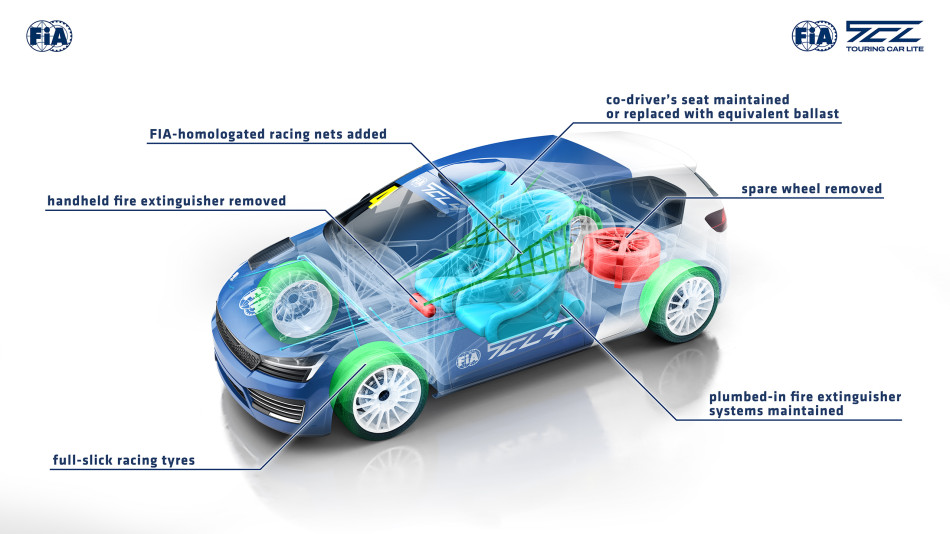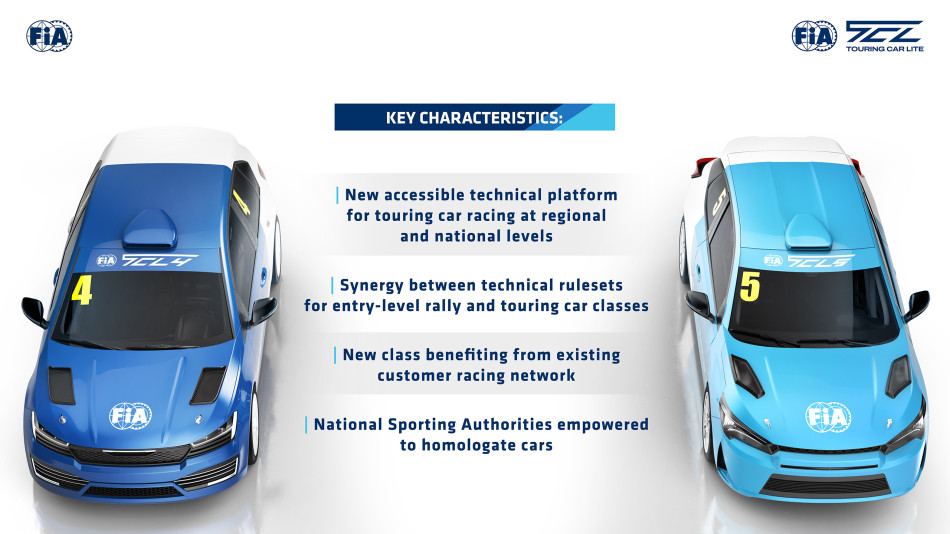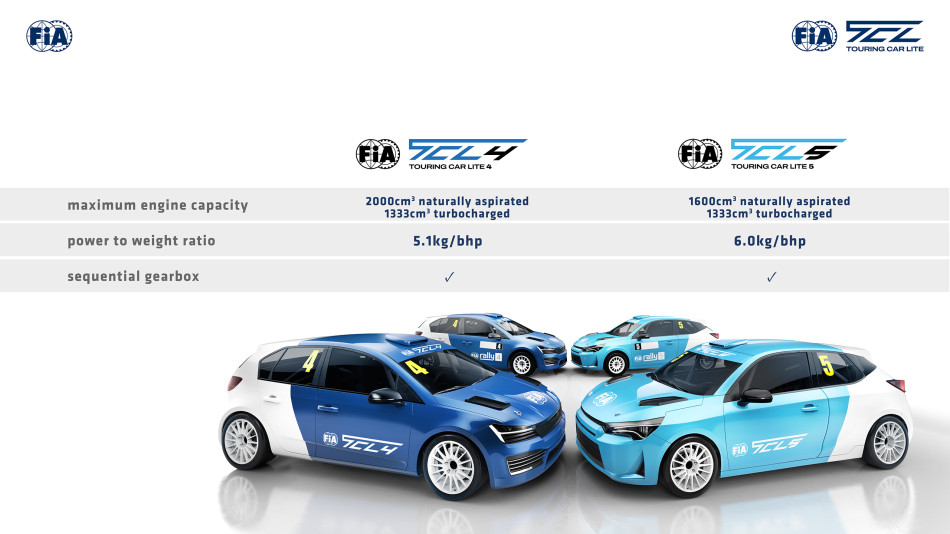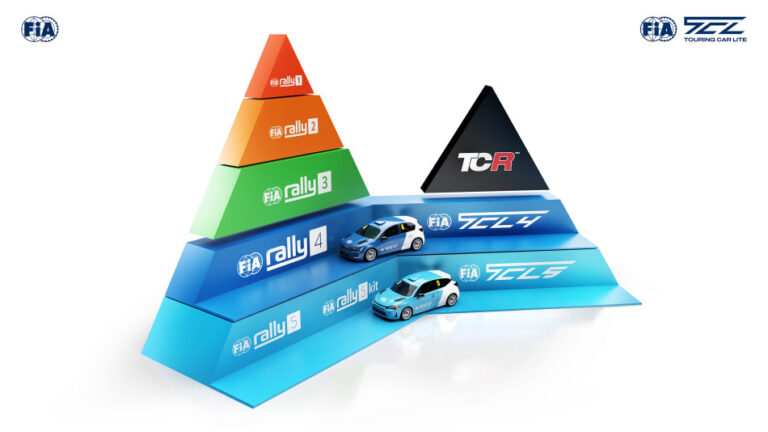The FIA has announced a new set of technical regulations for an accessible, entry-level touring car class based on existing rally regulations. The new category, TC Lite, will comprise of two subclasses, TCL4 and TCL5, utilizing existing Rally4 and Rally5 regulations and providing competitors with one car suitable for both rallying and circuit racing competitions.
The category will be enabled by the addition of a new regulation appendix which will allow Rally4 and Rally5 class cars to be used for circuit racing with minimal modification, without impacting their rally homologation. For example, changes such as revised minimum weights, to account for a lack of spare wheels and toolkits, and the use of full racing slicks will be implemented. In effect, this will create a base level for a touring car progression pyramid.
TC Lite will be comprised of two classes: TCL5 will be for the most accessible, entry-level cars with a power-to-weight ratio of around 6.0kg/bhp, while TCL4 cars will offer a step up in terms of performance, with approximately 5.1kg/bhp. The cars of both TC Lite classes are to be fitted with sequential gearboxes.
Alan Gow, FIA Touring Car Commission president, commented: “Introducing a pyramid structure to touring car racing is something that has been our aim for quite a while. TCR is a proven customer racing platform that works well both in national-level series and in world-level touring car racing. However, we have been missing an accessible entry-level platform.
“The introduction of the TC Lite rule set fills that gap. Having the very same cars in rallying and touring car racing has plenty of benefits – it is cost-effective, sustainable, provides the competitors with a level playing field and creates opportunities for more available seat time. At the same time, the manufacturers and their customer racing programs will be able to grow their business as the market for these cars will naturally broaden.”
The TCL5 subclass will also accommodate Rally5 kit cars, empowering national sporting authorities to approve cars prepared and homologated by local tuners for national competitions. This, the FIA hopes, will broaden the market and create space for local importers to promote certain models of cars offered in their respective domestic markets.
Andrew Wheatley, FIA Road Sport director, concluded: “The bottom tiers of the FIA rally pyramid have proven to be excellent entry-level classes in rallying, therefore broadening the use of these cars and making them compatible with circuit racing makes a lot of sense.
“This is a bit like in the Group N days when you would sometimes see the same front-wheel-drive cars taking part in different disciplines. This is also good news for drivers at the early stages of their careers who, to develop their skills, look for as much time behind the wheel as possible. Having one car eligible for different types of events offers exactly that. A universal technical platform like this one also has the potential to draw new people to motorsport and – long term – should contribute to increased motorsport participation globally.”



